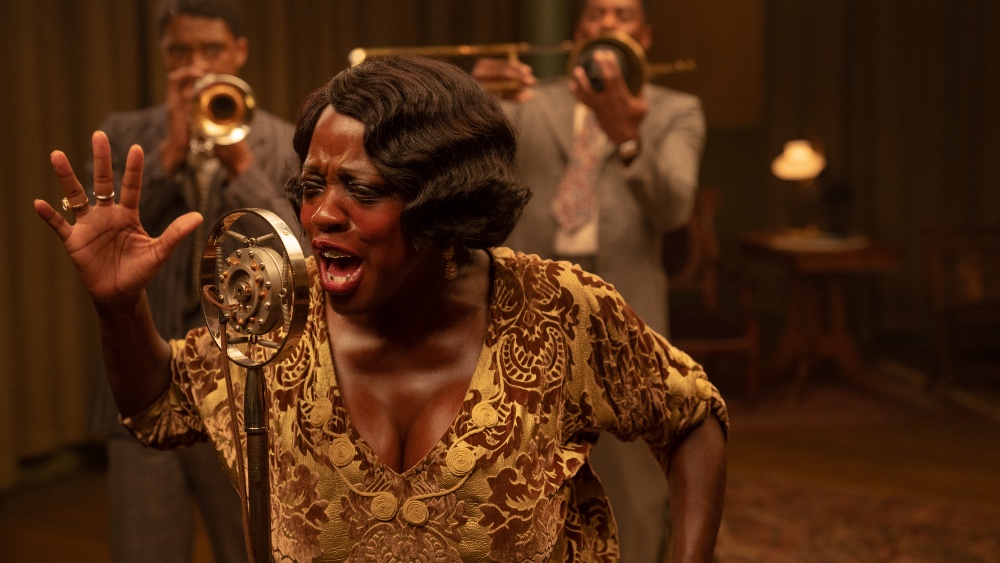
Based on the August Wilson play of the same name, George C. Wolfe’s film adaptation of Ma Rainey’s Black Bottom has quickly become a force to contend with during this awards season. Having scored a leading three SAG nominations, as well as two Golden Globe nods, the well-reviewed movie about the imperious blues singer in the title (played by Viola Davis) also serves up a crafts cornucopia. From carefully constructed sets to exquisite 1920s costumes, the film is sure to be a strong contender in many below-the-line categories at the Oscars.
Ma Rainey’s Black Bottom captures a particular episode in the famed singer’s life, when her white contractors expect her to make a record during a steamy summer in 1920s Chicago. She must contend with their demands, the ambitious aspirations of a trumpeter named Levee (Chadwick Boseman), and the mercurial demands of her own lover, Dussie Mae (Taylour Paige). But Ma Rainey appears overweight, haggard, and even drunk, not to mention highly affected by the ultra-hot conditions of the warehouse turned recording studio into which she’s been confined. Since none of those traits apply to the actress portraying Ma Rainey, the makeup and hairstyling team had a challenging and inviting task ahead of them.
Last month, Below the Line spoke to that team, Sergio Lopez-Rivera — in charge of Ms. Davis’ makeup — and heads of makeup, Matiki Anoff, and hairstyling, Mia Neal, about the creative process behind the actor’s looks.
In the interview below, you can learn how real horse hair, grease and a body suit all came together to produce one of the most visually memorable films of the year.
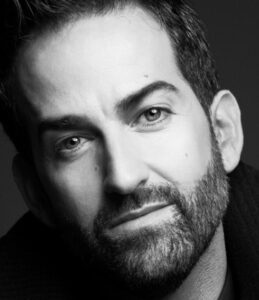
Below the Line: Thank you for talking to us about the film. How did the three of you get involved with this project?
Sergio Lopez-Rivera: I was working with Viola on How to Get Away With Murder, so while working on that show, pretty much at the last minute, she told me about this movie that was coming up and asked me to be her personal [makeup artist] for the movie, and I said “Yes” without knowing anything about this movie or character at all!
Matiki Anoff: The last few days before we wrapped Fences, Denzel [Washington] and the producer announced they were planning to bring to the screen all of August Wilson’s work. So I wasn’t surprised when I was called for this one, and I jumped at the chance since a period piece is such a wonderful experience, especially with Denzel.
Mia Neal: For me, I work with [Costume Designer] Ann Roth a lot, and she asked me to come on. I was super excited. I couldn’t believe we were going to get all of the needed things in two weeks, but with that team of people, what can you say? It’s a period piece, so you know you’re going to need some weeks and that you’re going to show up over-prepared. You also know that the cast is going to show up with their makeup and hair done the night before they appear in a Denzel Washington movie, which I’m always prepared for.
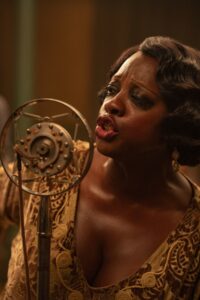
BTL: Talk to us about Viola’s look as Ma Rainey — she looks sweaty, drunk, and grungy. How did you create and implement that look?
Lopez-Rivera: My challenge was that I had never heard of [Ma Rainey], and we had to dive into her world with the very few photographs we have of her. On the other hand this made me free to create this outrageous character, and there were a few things that were just gold — no pun intended, given her gold teeth. The fact that she was heavy and sweated profusely, too. Those are golden nuggets, because they are telling you a story, which is what our job is — to have the makeup tell the story. What was it like being a woman in 1927? What was it like being a black woman in Chicago? What was available to her in 1927?
I took the beauty trend of the era, and I made her make some decisions, because presumably the makeup on her face, she applied herself. She made a lot of things herself, maybe by burning a piece of cork and running Vaseline on it. She would use her own lipstick as rouge. I forced her expression to give her a melancholy look by replicating the beauty of a 1920s doll onto her face but not doing a great job at it. All of this is something [you do] before you apply any makeup at all — you have to figure out.
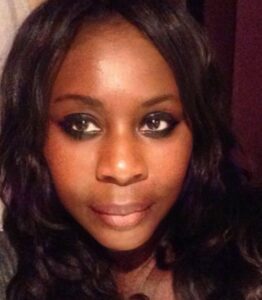
BTL: Matiki, how does all of that interact with how you wanted all the other people to look?
Anoff: There were only seven photos of [Ma Rainey], but it was commonly said she was one of the ugliest women in show business, which meant she would be out-sweating everyone, especially since [Director] George [C. Wolfe] brought it to the summer from winter. To me, it was another layer of oppression for these not very sophisticated people that came from the South and were still a part of the Great Migration.
So to me, first I saw how Ma was, and then listening to Ann Roth a lot about the dress — for example the torn dress by Dussie Mae — got me to where I wanted to be. Dussie Mae was desperately trying to fit in, and she got lucky to meet this singer. She was trying to look like a city slicker, but it was all a bit off. She was really just a country bumpkin. The band was a bit more polished, but they all had their degree of sweat, though it was important that they didn’t sweat more than Ma. The guys, when they were fighting, they all had a sweat moment.
BTL: How did you make it seem like they were sweating without actually destroying their makeup?
Lopez-Rivera: There are two elements to that. To have makeup protected from the wear of time or lights, we use primers as the first thing that goes on the skin. It’s supposed to hold on to the subsequent layers. The actual sweat, at least for Ma, I wanted some sweat to trickle down and some to stay still, depending on the moment in the movie. There’s a few tricks there — I had a couple of different formulas from the brand RCMA, to the ultra-wet, or baby oil, or gel. Then, right before they called action, I’d put in some little mist of water, to elevate the chances that some sweat would travel down at that moment.
Anoff: Slow Drag [a band member] had fake mutton chops and the script called for him to be sweating and patting himself down all the time. So we had to use this Hydro spirit gum that held and was waterproof, because the little bit of glycerin in the sweat lifts the glue in the mutton chop. Colman [Domingo, who plays another band member] had numerous tattoos on his neck, and we had to do a tattoo cover work on that, but he also had to wipe his neck all the time. So we had to airbrush them first, then add covering over the top, so that in event he did tap with the handkerchief, the tattoo wouldn’t show. He also had a lot of ear piercings but we plugged them up, but sometimes all the sweat would affect it. We were in every take.
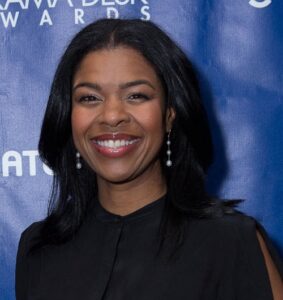
BTL: Mia, can you please tell us about the wigs?
Mia Neal: Viola had two wigs. The “show” wig she uses when she performs is one. Ann Roth discovered that Ma Rainey used a wig based on horse hair, and she said “You have to do that here” — A real challenge! I had to source this hair. It came bound together with wires and clearly wrap it on the horse with the wires and they cut it. It still had manure and lice eggs. I expected it to feel like human hair but actually it felt like a wire brush. The hairs were so thick that only one could fit through the lace when I was ventilating it. I had to boil it to clean it to put the rollers in it. In the process, I realized why Ma used it — it held the set. It had to be styled, but I never had to reroll it. I can imagine Ma Rainey in the 1920s traveling with her band and having this wig — it’s not like she could just walk into her local salon.
The second wig I designed based off of her costumer — a fur coat in the summertime. In my mind the psychological part of this was that Ma Rainey was the first in her family who was free. She had changed her name, moved from Southern Georgia. She’s a lesbian and has a husband. When you start dissecting her you realize she is the kind of woman who gets what she wants. And she probably wanted wavy hair that she couldn’t achieve with her own hair. So she went for a white woman hair. It’s supposed to look like a wig but an expensive one.
BTL: What about the wigs for Dussie Mae — how did that come about?
Neal: I wanted her haircut to look like she had done it herself, because she was a country girl like Matiki said. There’s part of the wigs that are uneven, some of the bobs are shorter than what the girls are really wearing. Her look is not polished at all, but it’s still cute.
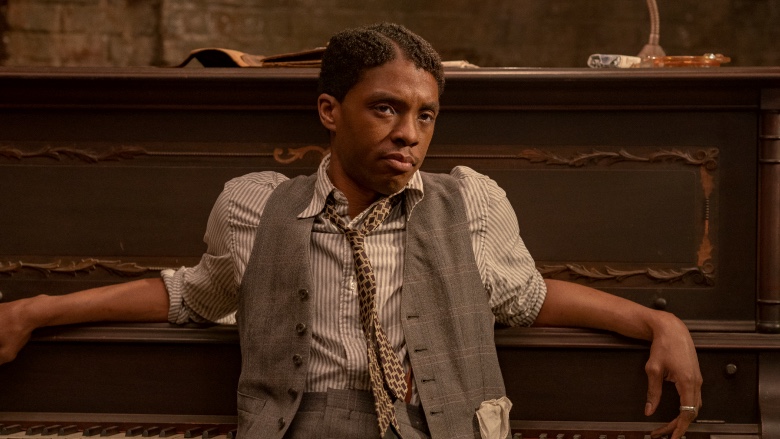
BTL: Your work combined very well to create all the effects you wanted — what was your favorite part of working together on this project?
Lopez-Rivera: The friendships. Everyone was fantastic. Watching Ann Roth working was such a gift. Mark Ricker, the production designer — I’ve never been in sets like that. It was the closest thing to time travel I ever experienced. Chadwick, too, what an amazing actor, what a kind person.
Anoff: My favorite part were the collaborations. It felt like home, since it’s a lot of the same crew that Denzel puts together. But it was lovely to meet Sergio and to really get to know Mia. Also Ann Roth — she blew my mind. Tobias, the cinematographer, also did amazing work.
Neal: I’ve done so much stuff with Denzel on Broadway — I loved seeing him as a producer and not on stage. His work ethic is next level. To be in his presence is unbelievable. It’s more than just beauty and talent that has kept him in this position. The first time I worked him on Broadway, after a production, he went out and signed the Playbill of every single person, and this was a matinee, and he had to go back on the stage at night. We were doing Shakespeare. He said to me: “If you want to reach a certain level, you don’t get a break. You better bring your A-game.”
Ma Rainey’s Black Bottom is now available to stream via Netflix.
All photos courtesy Netflix, except where noted otherwise. On-set photos by David Lee. Click on pictures to see larger versions.





